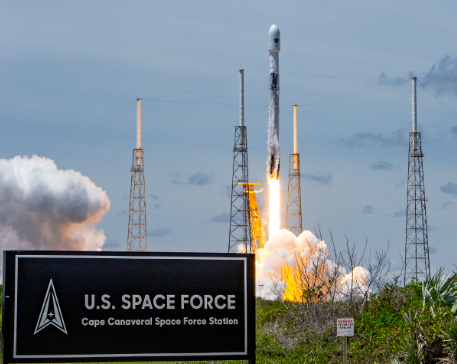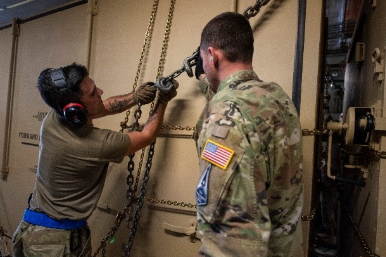Hon Calvelli, Assistant Secretary of the Air Force for Space Acquisitions and Integration, Focuses on Acquisition Speed and Training
By Bill Woolf, SFA President
The Honorable Frank Calvelli was recruited into the first senior position in the Air Force dedicated to Space Acquisitions and Integration to ensure the United States Space Force has the capabilities it needs to accomplish its mandated mission. When asked about his main concern, he continues to describe how speed is critical to this mission and defines reasons why the acquisition can be bogged down.
In the most recent Space Innovation Talk, Mr. Calvelli was asked about the importance of his tenants he put out last fall. “This is this is all about speed. I mean, one of the things that Congress and the department are very interested in is adding speed to space acquisition. And so, you know, getting that put in place is really the key. And that’s what the tenant is fundamentally there to do,” he replied.
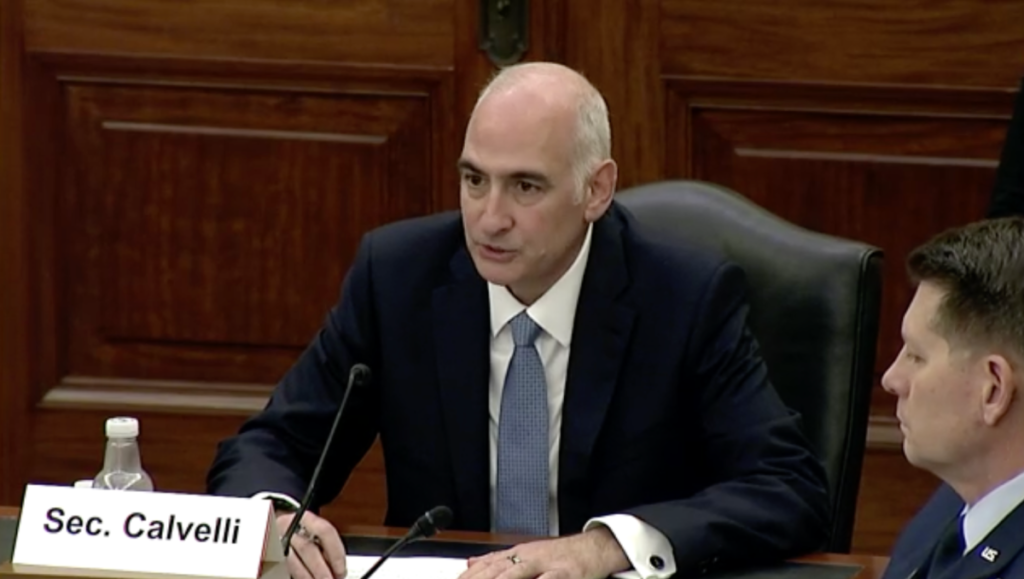
Calvelli goes on to describe the need for this speed in developing critical capabilities. “The reason we need speed is because we need to fundamentally transform our space architecture to be more diversified, more proliferated, and more resilient, so that the country could depend on us during times of peace, crisis or conflict.”
Factors Affecting the Speed of Acquisition Process for Space Operations
“There’s a variety of things that slow it up, when you build very large complex systems, whether that be satellite systems or ground systems, you ain’t going fast, right? I mean, big systems take many, many years to develop. And so large system slows you up. When you do a lot of new tech development, a lot of new technology inventions as part of the development contract, as part of the satellite acquisition, you’re going to slow things up,” he said.
Calvelli explains the parameters to examine when developing systems to support space operations. “So if you’re not using existing technology, existing designs, you’re going to slow things up by inventing new.”
Mr. Calvelli is also following the need for a overarching contract strategy to ensure capabilities can be delivered quickly. “If you get the contract strategy upfront, incorrect, not the right incentives, that can slow things down. Because you end up fixing the contract midstream,” said Calvelli.
Regarding quality, Mr. Calvelli cautions specific parameters which slow down delivery of quality capabilities. “We have a tendency in this competitive environment, especially on cost plus contracts to get low bids. And if you award a low bid, that’s going to slow you down, because you’re going to re-baseline the program somewhere down the road. If you change scope of contracts during the acquisition during the development cycle, you add spacecraft, you remove spacecraft, you update the baseline cost of independent cost estimate changes, I mean, you’re just driving instability. And that slows things up. You know, if you launch your satellite and your grounds (architecture) not ready, which I’ve seen, across the board and governments sometimes, you know, you just launch something that you can’t use, and that slows you up.”
When discussing the biggest impact to speed, Calvelli stated “simply just not executing to your plan, not delivering on schedule, not delivering on costs really affects our ability to speed.”
In summarizing his tenants, Mr. Calvelli states the “tenants were to build smaller satellites and smaller ground systems, minimize non-recurring engineering or new design, get the acquisition strategy correct up front.”
Importance of Teamwork and Avoiding Over-Classification in Space Acquisition”
Moving on to discuss the importance of teamwork and key to success, Calvelli mentions “teamwork between contracts and a program manager.” “That’s really a key to success in any healthy successful organization is that teamwork between the program manager on the government side, and the contracting officer, award executable contracts,” he said.
Classification has been a source of contention recently. Mr. Calvelli recommends avoiding “Special Access Programs (SAPs) and over classifying, because when you do, that gets really tough to integrate (in) space. And I think space is a great enabler that needs to be integrated in clearly with air with ground and with sea forces. And so having stuff in SAPs really limits your ability to integrate across the department, deliver ground before launch, hold industry accountable for results.”
“We were very fortunate in the space business now that there’s an amazing economic boom and space.”
– Hon. Frank Calvelli, Assistant Secretary of the Air Force
Introducing the Space Acquisition Formula Guidance
Mr. Calvelli put out his Space Acquisition Formula Guidance on 5 April 2023 to help institutionalize the tenants. When asked about this formula, Mr. Calvelli stated “The formula is derived completely from the tenant. And I keep getting asked the question, well, what’s the magic process? What has to change? How do we accelerate space acquisition, and I believe we actually have all the tools that we need today. And I put up this formula to simplify the tenants and to communicate to the tenants basically again.”
Space Development Agency is already demonstrating how effective this formula is. Mr Calvelli goes on to explain the formula and how SDA has successfully implemented it.
“But clearly, when you build smaller, and you use existing technology, or minimize your design work, and you drive the scope of the contract to be three years or less, and you use fixed price, you’re gonna go faster. I have seen this in my previous life and where I worked in the intelligence community, I’ve seen Space Development Agency successfully just do this themselves. And so I know the formula works. And I think we should be able to adopt and apply this formula to any orbit that you’re working in. Whether the orbits be GEO (geosynchronous orbit), MEO (medium earth orbit), HEO (highly elliptical orbit) or LEO (low earth orbit), it doesn’t really matter. Because of the threats and our need to transform the architecture. We have to go fast. I think this formula will allow us to go fast,” he said.
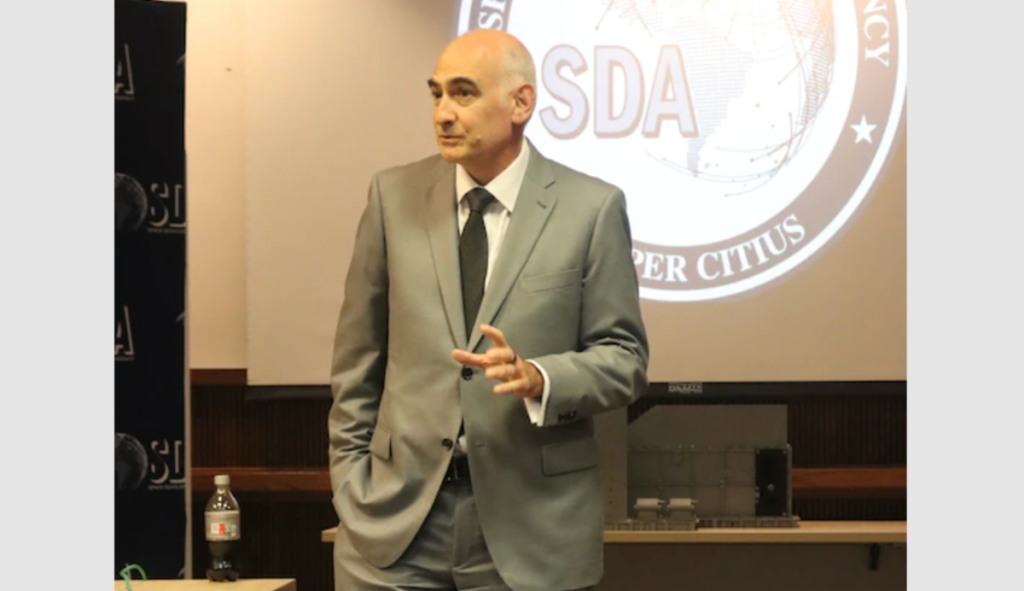
Mr. Calvelli discusses how he would like SDA to maintain their independence when he stated “I would like them to maintain their sort of they’re somewhat of their independence and the unique authorities that they’ve had to go fast, they have been truly going fast. If I look at the launch, just the other week, that we had. The SDA folks went from basically 31 months from contract award to launch, they launch a transport satellites into tracking satellites. And so far, it’s been very successful. So I really do see their model as a key model for the formula and for going fast across any orbital regime.”
Collaborating with the Intelligence Community for Faster Acquisition
Mr. Calvelli describes the criticality of the partnership with the National Reconnaissance Office to describe the threats posed by potential adversaries while also defining new techniques for national assets to provide ground moving target indicator support.
He states, “We know as much as we do about threats or concerns or issues from the IC (intelligence community), and they do a fantastic job keeping us up to date and understanding the environment out there. The NRO has a very special place. And with me in a partnership, that’s sort of where I learned everything. I mean, I spent over 30 years there. And so most of the approaches that I’m doing here to accelerate space acquisition, I derived directly from my experiences at the NRO. And then we also collaborate with the intelligence community on some acquisitions. And so we are looking at some work with the IC right now on ground moving target indicator (GMTI) as an example, and collaborating with them. And the reason we do that is again, it’s about speed. It is all about speed.”
He discusses the need to examine existing technology and using it to support USSF mission needs. He states “If the IC has solutions that could get us there faster, faster against the threat, we’re going to take up every opportunity to go faster. And so if that means collaborating with the IC, that’s good for the department.”
Visit the SFA Events page for upcoming Space Innovation Talks and Space Warfighter Talks.
